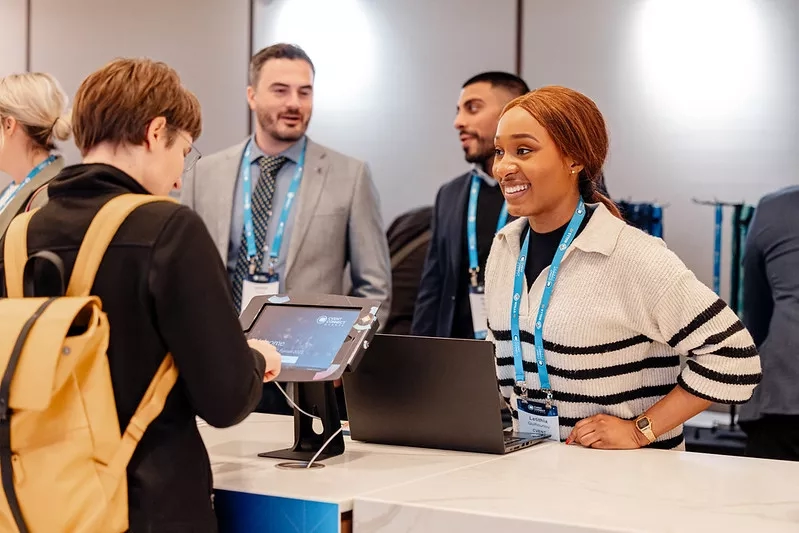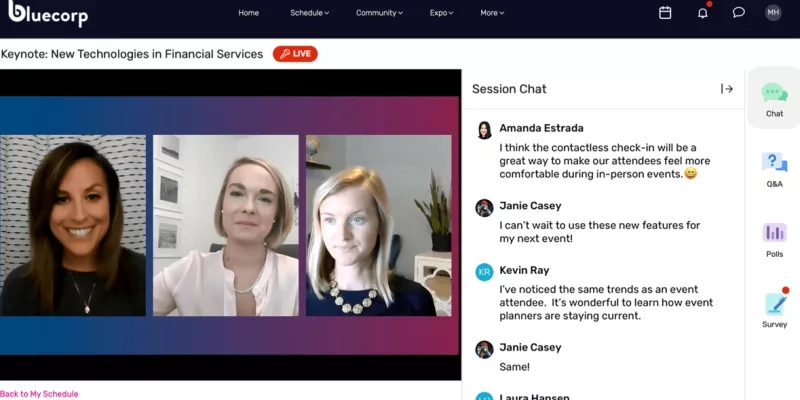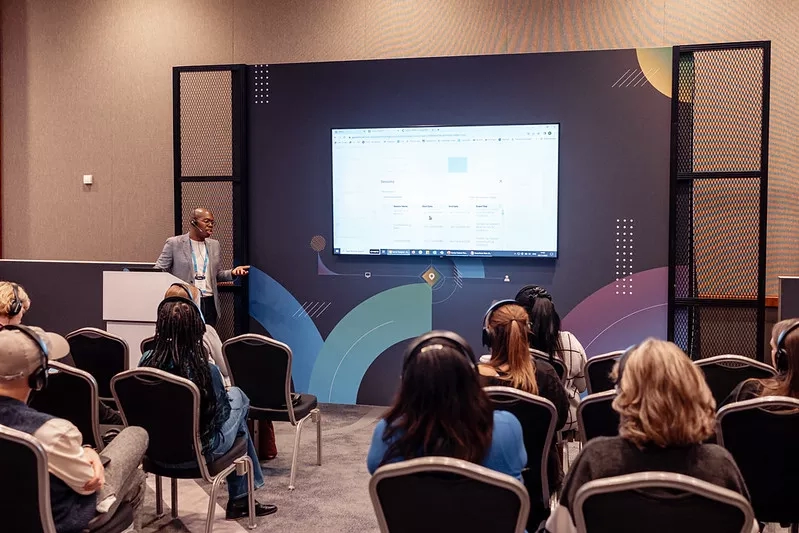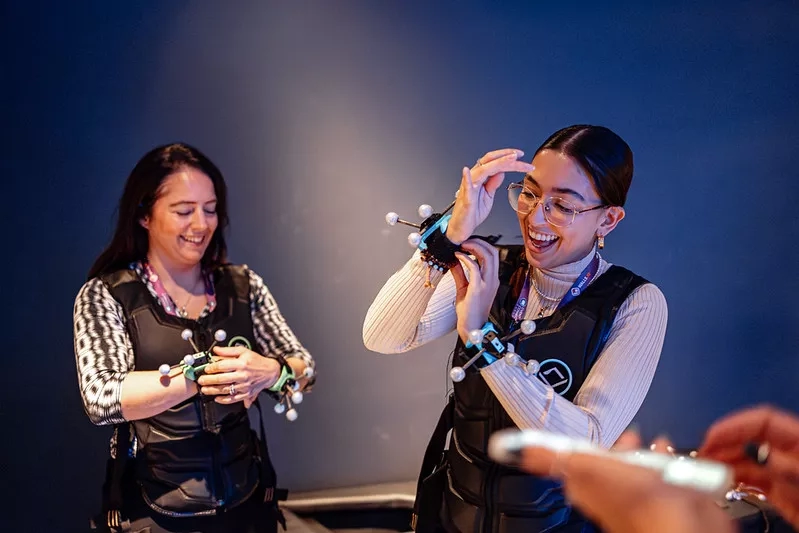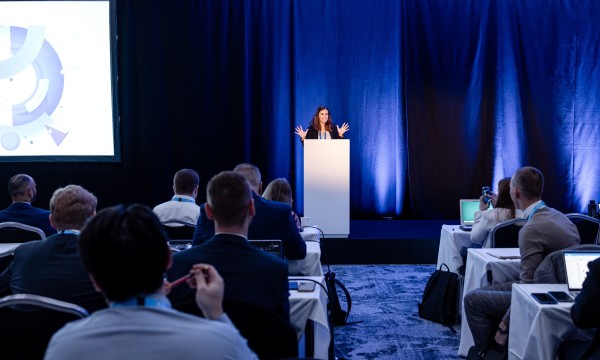Choosing the right event type for your business is a skill essential when planning an event. But what’s the difference between hosting a conference and a seminar? Or a webinar and a workshop?
When return on investment (ROI) is at stake, a lot.
Proving ROI>has never been simple (or easy!) when it comes to events. And picking the wrong event type for your business, your purpose, and your audience, can have disastrous consequences.
In this blog, we’ll explore seven event types available to you, the common goals and KPIs associated with them, and the event technology that can help you make them a success.
Why Is it Important to Choose the Right Event Type?
Picking the right event type is crucial to making your event a success. Not only is this because you’ll be more likely to hit your ROI targets but you’ll also:
Be more likely to close deals
Prevent wasted resources
Enhance audience interest, participation, and engagement
That’s why it’s key to understand each type of event, when to use them, and how they can support your organization’s goals. Doing this will ensure you’re aligned with stakeholders and allow you to prove your events are meeting the desired objectives.
7 Event Types to Help You Drive ROI
There is a wide range of event types out there for you to choose from, each serving different purposes and catering to different audiences. Here are seven key event types you may be considering:
1. Conferences
Conferences are large-scale events that bring together experts, professionals, and enthusiasts to discuss industry trends, share knowledge, and network. They often include keynote speakers, panel discussions, and breakout sessions.
It’s common for conferences to attract a global audience. For example, our conference, Cvent CONNECT, brings in marketing, events, and hospitality professionals from all around the US (and beyond!).
Choose Your Event Goals
Knowledge sharing and education: Conferences facilitate the sharing of knowledge, provide educational opportunities, and position you as an industry leader.
Networking and relationship building: Conferences often have designated areas or breakouts dedicated to facilitating meaningful interactions.
Promotion and exposure: Conferences provide a platform for you to showcase your products, services, and expertise.
Common Conference KPIs
Attendance and participation: Number of attendees, participation rates
Satisfaction and feedback: Participant satisfaction scores, feedback responses
Lead generation and business impact: Lead generation, business partnerships or deals initiated
Event Tech You Need
Onsite technology: It’s critical to create an exceptional first impression. Deliver a contactless or concierge badging experience with onsite technology, then use real-time event data to stay on-top of logistics and performance.
Virtual and hybrid event platforms: Virtual and hybrid event platforms like Cvent Attendee Hub enable you to broadcast live to virtual audiences around the world, extending your reach. These platforms also enable you to provide content for your audience to consume before, during and after the conference.
2. Seminars
Seminarsare educational events focused on in-depth learning about specific topics. They involve interaction between presenters and participants, fostering a more hands-on and engaging experience.
Seminars often begin with a presentation on a particular topic, followed by Q&A sessions, discussions, and sometimes interactive workshops. Because seminars are typically small in scale, they foster a more direct form of interaction between you and your audience.
Choose Your Event Goals
Skill development: A key goal associated with seminars is enhancing the participants’ understanding of a particular subject or product.
Networking and collaboration: Seminars provide opportunities for networking and collaboration among participants.
Promotion and thought leadership: Some seminars are organized to promote a specific idea, product, or service.
Common Seminar KPIs
Attendance rates: Number of attendees, percentage of registered participants
Learning outcomes: Pre- and post-seminar assessments, participant feedback, skill development metrics
Satisfaction scores: Participation satisfaction surveys, feedback scores
Event Tech You Need
Venue sourcing technology: Venue sourcing technology, such as the Cvent Supplier Network (CSN), enables you to find the right venue for your organization and event. It connects you to thousands of event planners sourcing in your area and offers RFP templates, search filters, and more to help your search.
Event registration technology:Reliable event registration technology helps get your seminar off to a smooth start. Attendees can turn up, enter their details, and get their event badge printed in a matter of minutes.
3. Webinars
With the rise of online communication, webinars and virtual events allow participants to engage remotely. These events are suitable for education, product launches, and panel discussions.
Webinars typically involve a solo presenter or a panel of speakers to deliver content through slides or discussions.
Just because webinars are held online doesn’t mean there’s a lack of audience engagement, however. Your audience can communicate with you and other attendees throughengagement features such as Q&A, polls, and chat.
Choose Your Event Goals
Lead generation and marketing: Webinars are effective tools for lead generation and marketing. Webinars allow you to showcase your expertise, products, or services.
Audience engagement: Engaging participants and fostering interaction is a key goal for webinars and can lead to greater audience satisfaction.
Knowledge sharing: Many webinars are organized with a core goal being to advance participants’ understanding of a specific topic or skill.
Common Webinar KPIs
Attendance and registration rates: Number of registrants, attendance rate
Audience engagement: Chat participation, Q&A interaction, poll responses
Conversion and lead generation: Conversion rate, lead generation
Event Tech You Need
Webinar platforms: Platforms like Cvent Webinar give you intuitive production tools to help you create webinars, switch up your backgrounds with director tools, engage your attendees, and showcase your brand.
Virtual whiteboard: Virtual collaboration tools allow presenters to illustrate concepts, brainstorm ideas, and engage participants in real-time collaboration.
4. Training and Workshops
Training and workshops are educational events designed to impart specific skills, knowledge, or competencies to participants. They can be internal, focusing on employee development, or external, targeting clients or industry professionals.
Unlike traditional lectures, training sessions and workshops emphasize hands-on learning. Participants are actively involved in exercises, simulations, and practical activities to reinforce theoretical concepts.
Choose Your Event Goals
Skill development: The primary goal of many training sessions and workshops is to develop or enhance technical abilities, soft skills, or leadership capabilities among participants.
Team-building and collaboration: Activities and exercises may be designed to enhance teamwork, communication, and cooperation among participants.
Knowledge transfer: The goal of training and workshops is often to ensure participants gain a comprehensive understanding of the content presented.
Common Training and Workshop KPIs
Attendance rates: Number of participants, participation rates
Skill acquisition: Pre- and post-assessment scores, skill proficiency metrics
Participant satisfaction: Participant satisfaction scores, feedback responses
Event Tech You Need
Learning management systems: Learning Management Systems provide a centralized platform for organizing, delivering, and managing training content.
Survey tools: Survey and event feedback tools help you gauge what participants found helpful enable you to optimize for future training and workshops.
5. User Groups
User groups bring together individuals who use a specific product, service, or technology. These events foster community, encourage knowledge sharing, and provide a platform for users to connect with each other and the product/service provider.
User groups often serve as forums for users to provide feedback about a particular product or service. This direct interaction allows users to express their opinions, suggest improvements, and contribute to the development of the product or service.
Choose Your Event Goals
Community building: User groups provide networking opportunities among individuals with similar interests or experiences.
Product feedback: These events often serve as a direct channel for users to provide feedback on products or services.
Knowledge sharing and support: A primary goal of user groups is to provide mutual support among members.
Common User Group KPIs
Membership engagement: Active participation, event attendance
Knowledge sharing and content interaction: Content contributions, resource downloads
Product feedback: User feedback submissions, net promoter score (NPS)
Event Tech You Need
Customer feedback and survey tools: These tools enable you to create surveys, polls, and feedback forms to collect opinions, preferences, and suggestions.
Collaboration tools: Collaboration tools like Slack or Asana can enhance communication and coordination within user groups, especially if you have virtual attendees.
6. VIP Events
VIP events are exclusive gatherings designed for a select group of individuals, such as high-profile clients, top customers, or key stakeholders.
A networking event aims to strengthen relationships, express appreciation, and create a unique and memorable experience. This is done through unique, memorable, and often high-end experiences.
VIP events are often highly personalized to cater to the preferences and interests of the attendees. This may include tailored experiences and custom amenities.
Choose Your Event Goals
Relationship building: VIP events give you a unique opportunity to build or strengthen relationships with key stakeholders, influencers, clients, or partners.
Brand and product showcase: The goal of VIP events is often to create an exclusive and memorable experience that highlights your achievements and offerings.
Customer appreciation and loyalty: These events enable you to express gratitude and appreciation to your attendees, which encourages loyalty.
Common VIP Event KPIs
Guest satisfaction and feedback: Guest satisfaction scores, post-event surveys
Relationship-building outcomes: New partnerships or collaborations, business opportunities initiated or progressed
Brand exposure and media coverage: Media impressions, social media mentions, press coverage
Event Tech You Need
Mobile apps:Event apps give you a way to facilitate meaningful connections among attendees through personalized introductions and one-on-one meetings, for example.
Virtual and augmented reality: Integrating virtual and augmented reality technologies can add a unique and immersive dimension to VIP events. These tools offer an engaging way to showcase products and solutions like car interiors or 3D room diagramming technology.
7. Networking Events
Networking events facilitate connections between professionals in a more casual environment. The choice of venue plays a crucial role in the success of networking events and depends on the atmosphere you’d like to foster. For example, use a rooftop terrace or outdoor venue to create a relaxed, refreshing atmosphere or a gallery to spark deep, meaningful conversations.
To facilitate interactions, networking events often incorporate icebreakersand activities. These can include games, themed discussions, or facilitated introductions to help participants feel more comfortable engaging with others.
Choose Your Event Goals
Facilitate meaningful connections: Networking events give you an environment where individuals can engage in conversations and establish professional relationships.
Generating business opportunities: Networking events are often strategic, seeking to create opportunities for business development, partnerships, and collaborations.
Promoting knowledge exchange: These events promote a collaborative atmosphere and contribute to the professional development of attendees.
Common Networking Event KPIs
Attendee engagement: Interaction levels, business card exchanges, meetings set up, social media activity
Lead generation and business connections: Number of new leads, partnerships initiated or progressed
Participant satisfaction: Participant satisfaction scores, post-event surveys
Event Tech You Need
Venue sourcing tech: Venue sourcing technology enables you to find the perfect location for your organization, whether it be a four-star hotel or a unique location like a rooftop bar or museum.
Registration: Use your event registration website to gather important information about your attendees ahead of the event. This enables you to better personalize the attendee experience.
What Else Should I Consider When Choosing My Event Type?
While goals, KPIs and event technology are important factors when it comes to picking an event type, they’re not the only considerations. It’s also important to assess:
Format (In-person, Hybrid, Virtual): The format of your event plays an important role in determining your event type. Consider your audience's location, accessibility, and the nature of the content. In-person events offer face-to-face interaction, hybrid events combine in-person and virtual components, and virtual events allow you to extend the reach of your event.
Budget: Different event types come with varying price tags and it’s important to consider your budget constraints when choosing between a webinar and a seminar, for example.
Timeline: Consider the time available for planning and executing the event. Some event types may require more lead time than others. Ensure that the timeline aligns with the complexity of the chosen event.
Target Audience: Finally, know your audience and their preferences. Consider their demographics, interests, and how they prefer to engage. This will influence the format and style of the event.
Go Forth and Pick Your Event Type!
Now it’s time for you to pick the event type that suits your organization. Don’t forget about the goals you’re trying to hit, the event technology you’ll need, and considerations such as format, budget, timeline and target audience.
To learn more engagement strategies and best practices you can implement at your next event, read our Ultimate Guide to In-Person Events.


